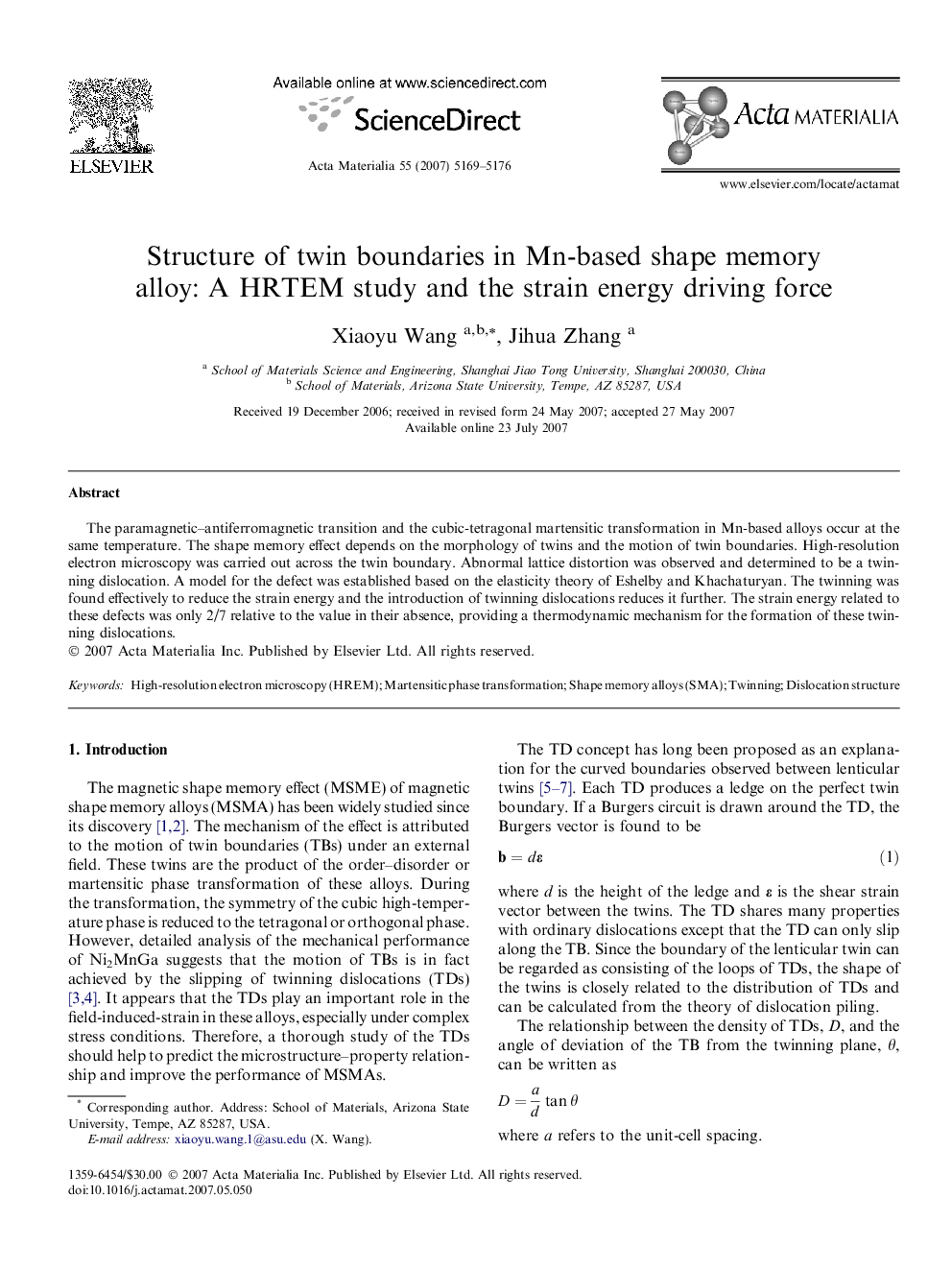| Article ID | Journal | Published Year | Pages | File Type |
|---|---|---|---|---|
| 1450781 | Acta Materialia | 2007 | 8 Pages |
The paramagnetic–antiferromagnetic transition and the cubic-tetragonal martensitic transformation in Mn-based alloys occur at the same temperature. The shape memory effect depends on the morphology of twins and the motion of twin boundaries. High-resolution electron microscopy was carried out across the twin boundary. Abnormal lattice distortion was observed and determined to be a twinning dislocation. A model for the defect was established based on the elasticity theory of Eshelby and Khachaturyan. The twinning was found effectively to reduce the strain energy and the introduction of twinning dislocations reduces it further. The strain energy related to these defects was only 2/7 relative to the value in their absence, providing a thermodynamic mechanism for the formation of these twinning dislocations.
